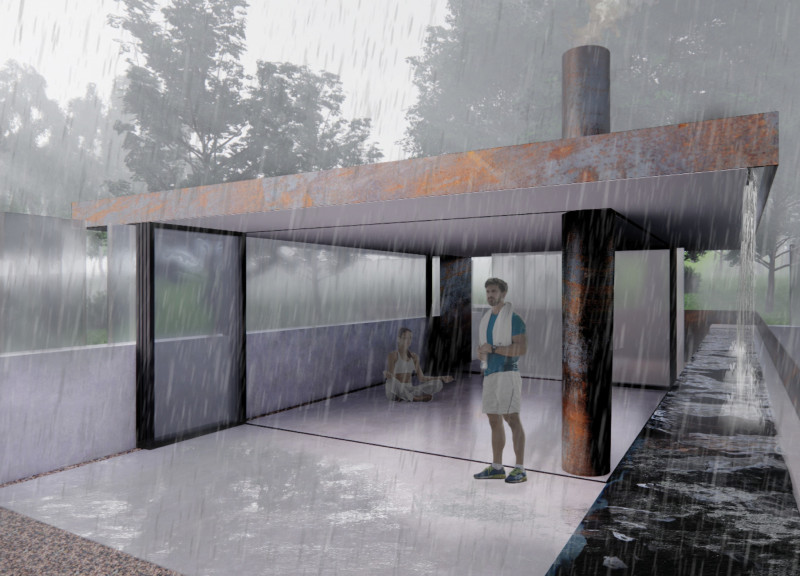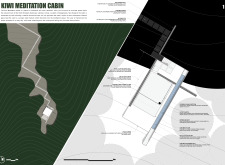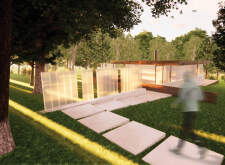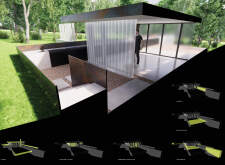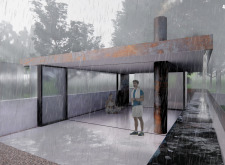5 key facts about this project
The Kiwi Meditation Cabin, located in Mangatarata, New Zealand, is a peaceful space designed for relaxation and reflection at the Earth Energies Sanctuary wellness retreat. Built to connect with its natural surroundings, the cabin promotes introspection through thoughtful landscaping and architectural choices. The design focuses on simplicity and an awareness of the environment, encouraging users to immerse themselves in nature.
Site Integration
The cabin sits along a gentle slope that leads visitors towards it, making the approach feel natural and inviting. As people walk to the cabin, they pass through layers of translucent channel glass that provide a clear view of the outside. This arrangement draws attention to the surroundings, enhancing the sense of space and encouraging a deeper connection as one enters.
Water Element
A key feature of the design is a water element that flows into the meditation area. On rainy days, water cascades from the roof into this feature, creating a calming sound and inviting users to interact with both the cabin and its environment. The presence of water reinforces the connection between the building and the landscape, creating a tranquil atmosphere.
Materiality and Structure
Concrete is a significant material in the cabin's design, especially in the steps leading to the entrance, which are designed with gaps to support the growth of native plants. This choice helps to blend the built environment with the natural one. Additionally, a retaining wall made of naturally rusting steel runs from the entrance, emphasizing the relationship between the building and the landscape. The careful selection of materials reflects a commitment to environmental awareness.
Spatial Dynamics
Inside, an operable glass partition provides expansive views to the south, removing barriers between the inside and outside. This feature creates a flexible space ideal for meditation or quiet reflection. A steel chimney, designed for burning aromatic scents, also supports the structure of the cabin. Further, a roof scupper directs rainwater into a reflection fountain, adding a gentle auditory element, while the concrete floor flows from indoors to outdoors, enhancing the unity between these areas.
The reflection fountain offers a calming focal point, where water flows in various directions, contributing to a serene atmosphere within the cabin. This design encourages users to appreciate both the stillness of the space and the surrounding natural beauty.


